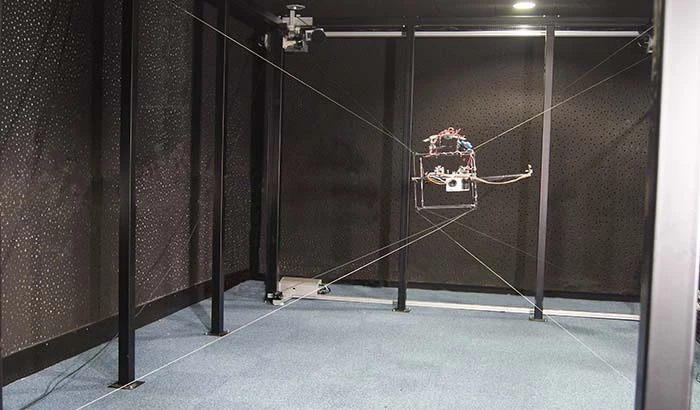Currently the only way of getting stable video of insects in flight involves tethering them in place – which some people would say isn't really "flying" at all. Now, however, French scientists have developed a camera platform that moves through the air with the insect.
The robotic system was created via a collaboration between CNRS (French National Center for Scientific Research), the University of Lorraine, and INRA (National Institute of Agricultural Research).
Known as lab-on-cables, it incorporates a small cube-shaped frame equipped with two tiny PixyCam cameras and one high-speed camera. That rig is suspended in mid-air within an enclosed area, by a series of cables.

As the target insect flies through the air, the PixyCams stereoscopically track its position in three-dimensional space. Utilizing that data, the system instantaneously responds by selectively winching the cube's cables in or out, allowing it to maintain its position relative to the insect. As a result, its high-speed camera is able to obtain stabilized footage of the insect, in which the animal stays centered in the frame at all times.
It's actually not unlike a tiny version of the Skycam system used for film production and sports coverage, in which a cable-suspended camera moves through the air above its moving subject.
So far, lab-on-cables has been successfully used to track and film free-flying Agrotis ipsilon moths, which were moving at a speed of 3 meters (9.8 ft) per second. Down the road, it is hoped that the technology could be utilized to gain a better understanding of the orientation strategies used by insects such as fruit flies or mosquitos.
A paper on the research was published this week in the journal Science Robotics.
You can see the camera platform in action, along with video shot by it, via the link below.
Source: CNRS




